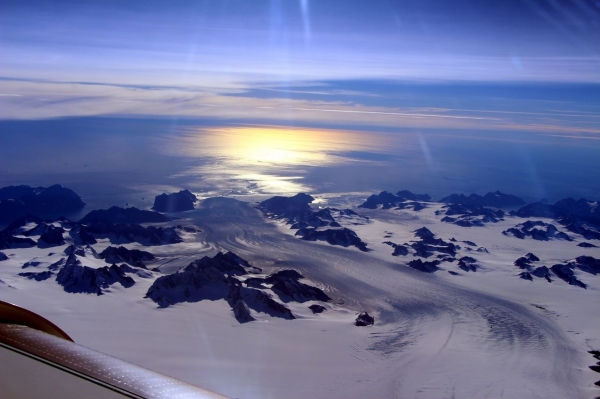As climate change causes ocean temperatures to rise, one of Greenland’s previously most stable glaciers is now retreating at an unprecedented rate, according to a new study.
Led by researchers at The Ohio State University, a team found that between 2018 and 2021, Steenstrup Glacier in Greenland has retreated about 5 miles, thinned about 20%, doubled in the amount of ice it discharges into the ocean, and quadrupled in velocity. According to the study, such a rapid change is so extraordinary among Greenland ice formations that it now places Steenstrup in the top 10% of glaciers that contribute to the entire region’s total ice discharge.
The study was published today in Nature Communications.
The Steenstrup Glacier is part of The Greenland Ice Sheet, a body of ice that covers nearly 80% of the world’s largest island, which is also the single largest contributor to global sea rise from the cryosphere, the portion of Earth’s ecosystem that includes all of its frozen water. While the region plays a crucial part in balancing the global climate system, the area is steadily shrinking as it sheds hundreds of billions of tons of ice each year because of global warming.
Read more at: Ohio State University
The K.J.V. Steenstrup Glacier during the summer melt season in 2016. (Photo Credit: NASA/John Sonntag)


